The Blaydon Races song written by Geordie Ridley states ‘we flew across the Chain Bridge, reet into Blaydon Town’. This refers to the old road suspension bridge linking Scotswood, on the north bank of the Tyne, to Blaydon just about one mile west over on the south bank. The bridge was sadly demolished and replaced by a bow shaped ‘box girder’ bridge back in 1967.
The old bridge was narrow and becoming a bottleneck. Shame it had to go though – many experts felt it was the most beautiful of all the Tyne bridges.
Here is a brief history of this lovely old bridge together with the other bridges all within just a few hundred yards of this stretch of river.
SCOTSWOOD BRIDGE aka ‘THE CHAIN BRIDGE’
It was the first bridge over the Tyne of the industrial era. Its purpose was to provide a link from the Gateshead/Hexham turnpike (toll road) to the north bank of the river. Newburn and Stella were considered as crossing points but for various reasons unsuitable so a toll bridge was proposed by The Scotwood Bridge Company and a road/rail bridge approved by Parliament, in 1829. Only the road bridge went ahead as the railway company withdrew support.
The bridge was designed by John Green using the chain suspension patent held by Captain S Brown. The grand opening took place April 1831 with a procession, dignitaries, etc.
Newcastle Corporation purchased the bridge (and approach roads) in 1905 and removed the toll in 1907. The existing toll revenue had long recovered the building costs.
The 'seventeen foot wide' carriageway was widened in 1931 to include two ‘six foot’ footpaths, the bridge being strengthened for this purpose by replacing the wrought iron chains with steel wire cables. Other strengthening measures were taken to enable the maximum vehicle weight to increase from six to ten tons.
With increasing motor traffic in the mid twentieth century the bridge was increasingly unable to cope. The narrow passage between the arches of the suspension towers being a particular bottleneck. Attempts to preserve it failed so sadly the famous bridge was closed in 1967 the only visible remnant being the north buttress, just east of the replacement bridge.
It was replaced by a bow shaped, box girder bridge which has had perhaps more than its share of maintenance requirements.
In its early days the old Chain Bridge was set in scenic countryside and was the finishing point for the famous championship rowing regattas – with oarsmen such as world champions and hugely popular local heroes Harry Clasper, Robert Chambers, James Renforth. And of course it was immortalised in the song.
With the rapid growth of industry the surroundings gradually industrialised and the massive growth in road traffic meant that sadly the bridge was unable to cope, so after serving for 136 years the bridge came down and so ended an era.
Photos below - thanks to Michael Watson for the two colour pics taken when the new bridge was under construction. The final photo (the new and the old) was passed to me by Spiker John Harrison and is part of a wonderful collection of photos taken by the late Ray Cameron, also from The Spike, Blaydon Haughs.
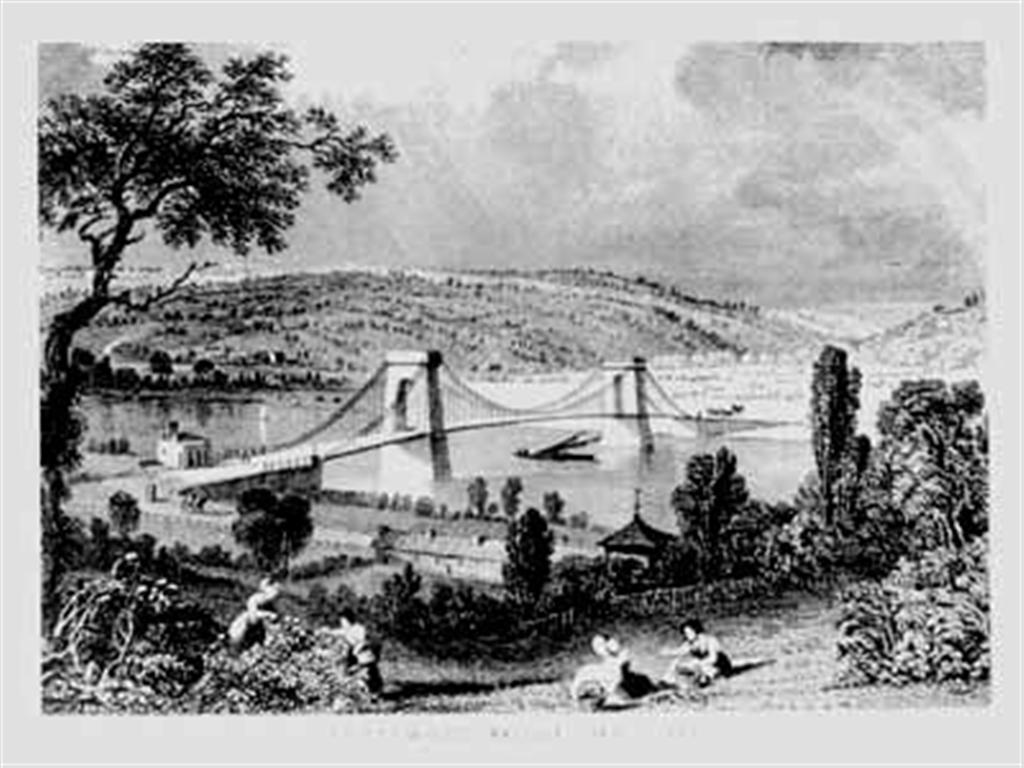
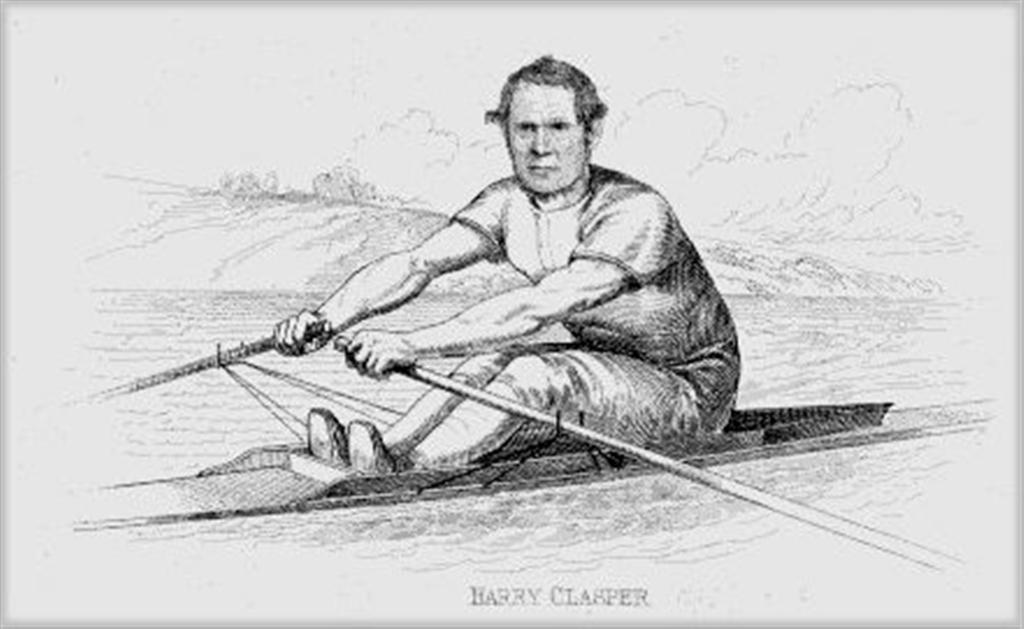
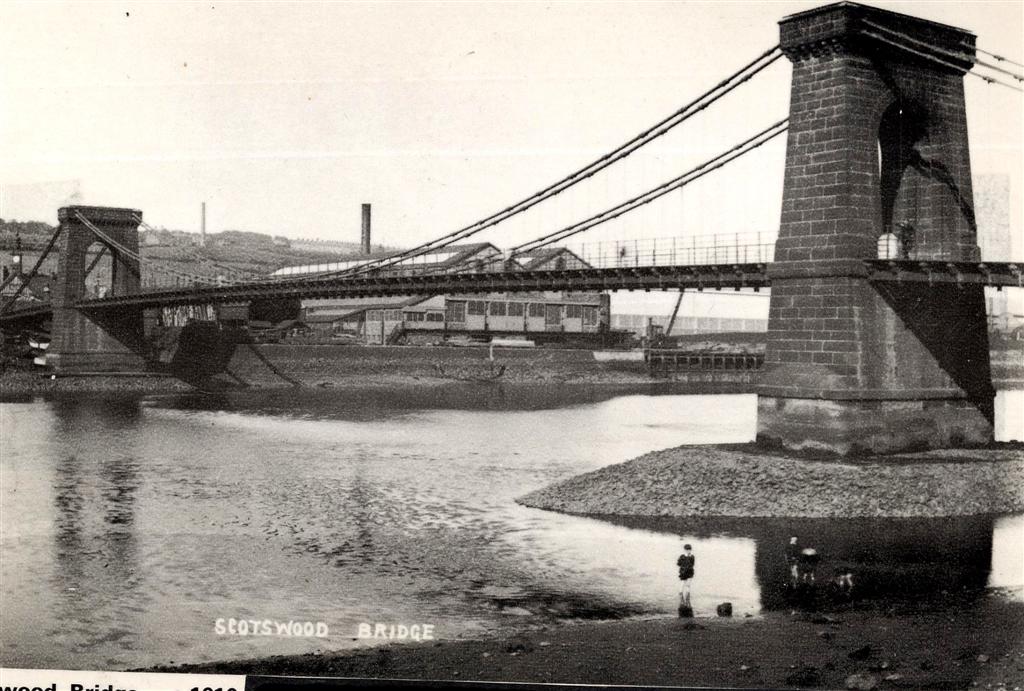
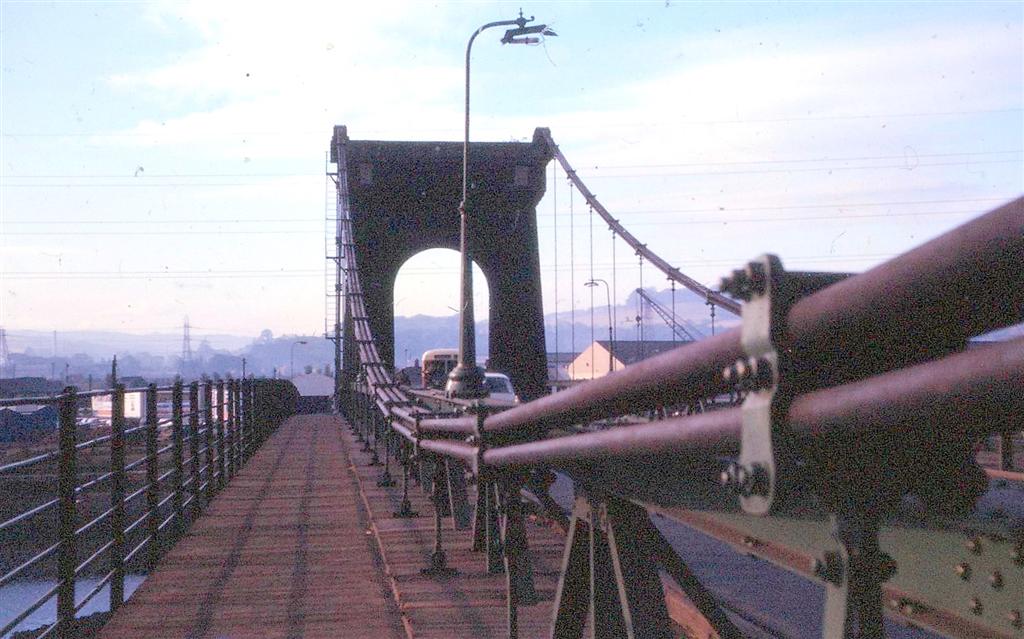
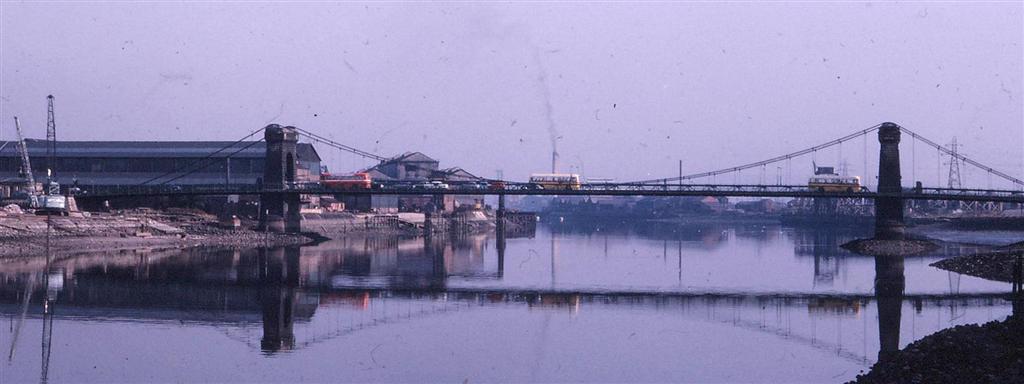
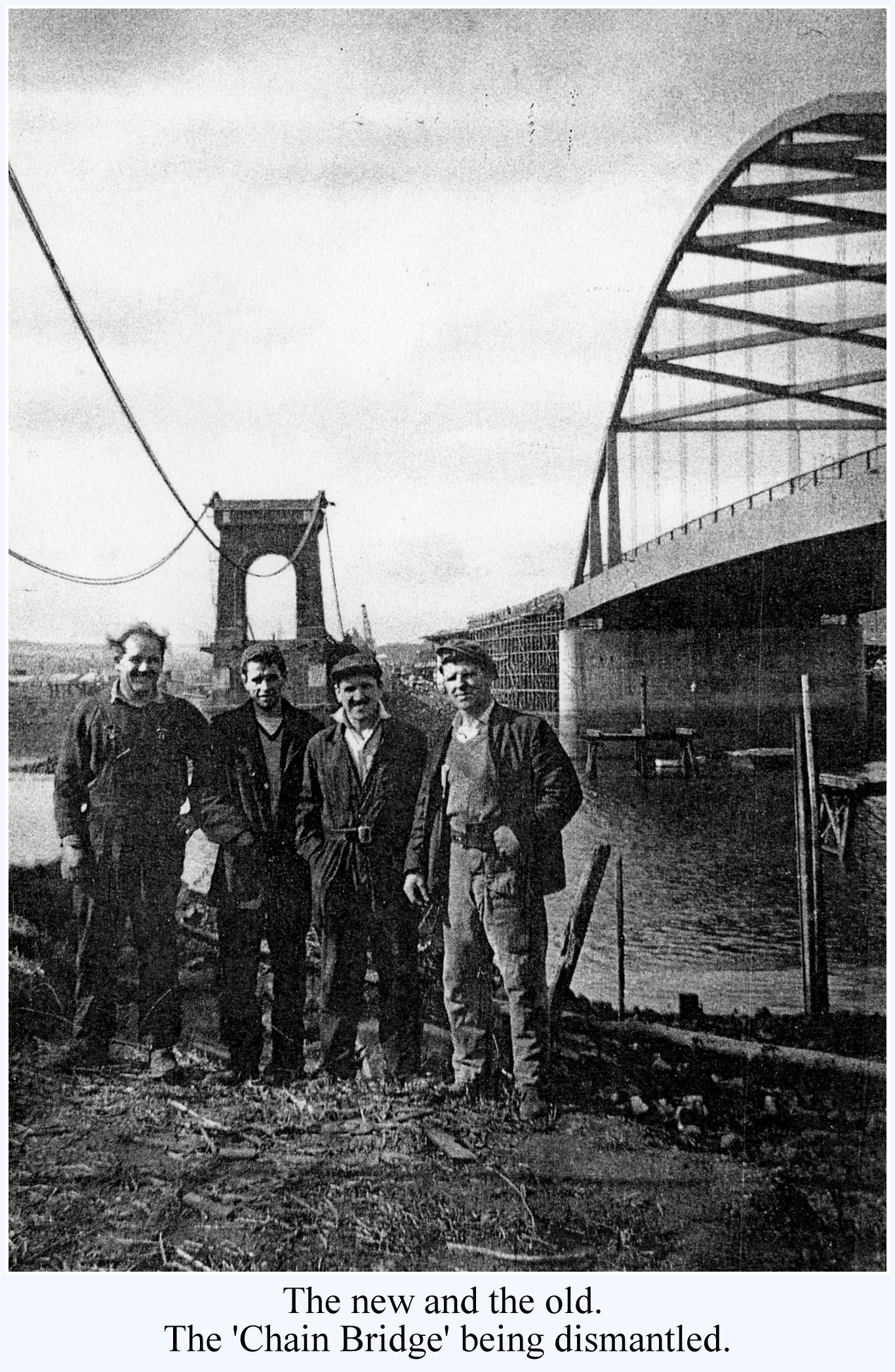
SCOTSWOOD RAILWAY BRIDGE
The Blaydon to Hexham Railway opened in the early 1830s and the railway company’s reluctance to build a dual road/rail bridge at that time (the Chain Bridge original concept), left the eventual need for a railway bridge to complete the rail link through to Newcastle. So a timber bridge was eventually built in 1839 (west of the chain bridge) but badly damaged by fire in 1860. Another timber built replacement in 1861 was replaced by a temporary single track bridge in 1865 by which time the decision not to utilise the original Chain Bridge ‘dual purpose’ concept was probably being regretted!
In 1871, at the behest of the North Eastern Railway, a new double track bridge was built to carry what was now the Carlisle to Newcastle Railway. The new bridge was designed by T E Harrison and constructed by Palmers of Jarrow, to a distinctive design using wrought iron girders on five cast iron piers. It was set at an angle to minimise bends in the track enabling trains to maintain high speed while crossing.
Sadly it closed to rail traffic in 1982 when the old goods line on the south side of the river which continued through to Gateshead (then over the Redheugh Bridge into Newcastle) was upgraded to passenger usage, and used as an alternative route. Also closed then was the north Tyne branch of the line (through Newburn, Wylam and joining the Blaydon track west of Prudhoe) – this a cost cutting exercise.
The railway bridge still stands with the track removed but crossing not permitted - its only function now is to carry water and gas mains. Shame about the dreaded graffiti.
One Blaydon anecdote, still recanted, is of a train stopping on the bridge one dark night (in wartime blackout) for some unexpected reason. A Blaydon passenger, thinking he was at Blaydon Station, stepped out onto the bridge parapet, thinking it was the platform, and fell into the river. I’ve heard that story many times so there may be some truth in it. Can anyone verify it? Update!! - I've since been told by an uncle the unfortunate passenger was Tommy Gillings of Blaydon. He was his schoolmate. But Tommy was a good swimmer and managed to swim to to the south river bank. He then walked to The Spike, the first house being Ji and Sally Chapman's where they took him in and helped him recover, dry off etc.
B/W photo below of J39 steam loco on the bridge by Jack Teasdale, date unknown. Colour pics taken Dec 2011.
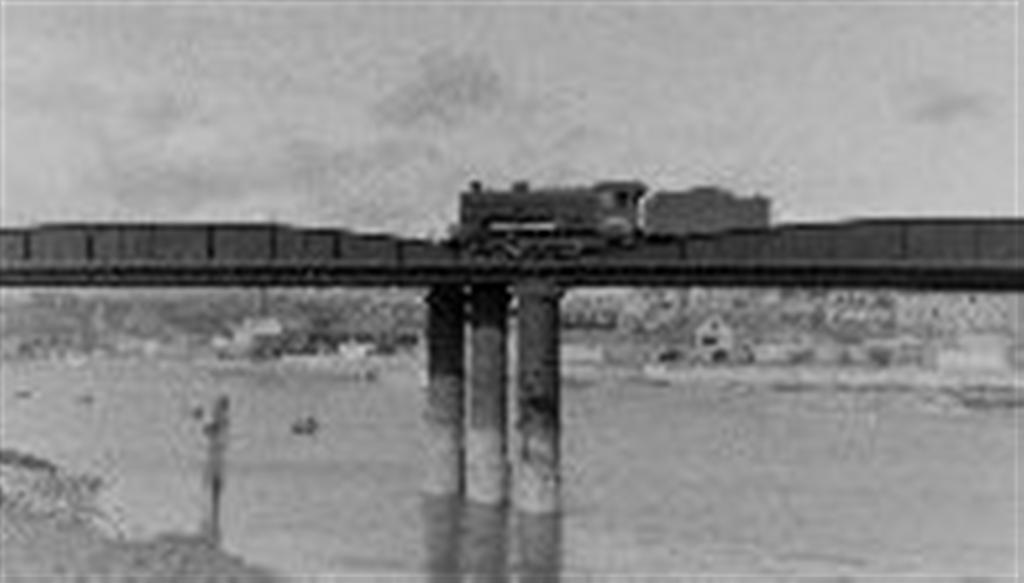
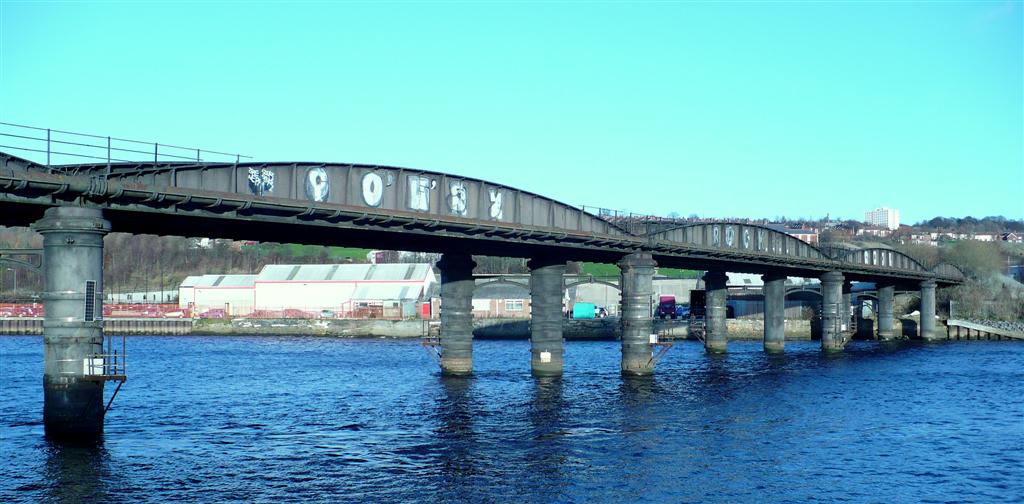
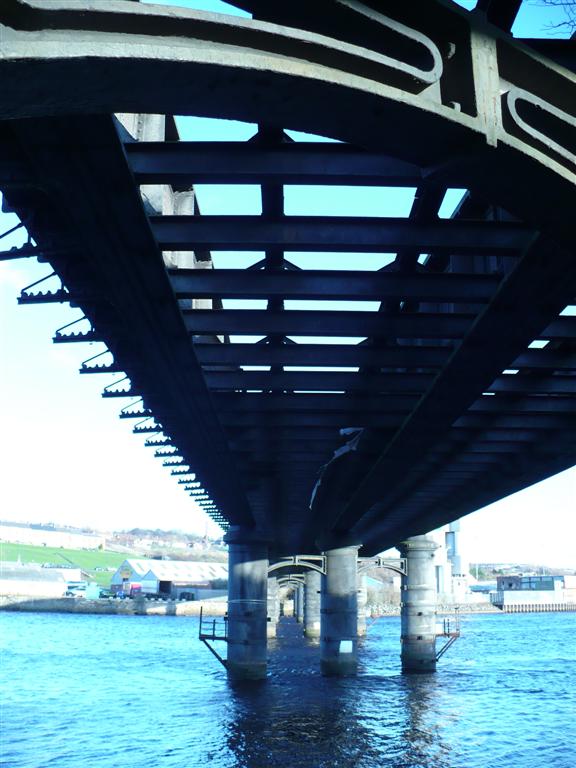
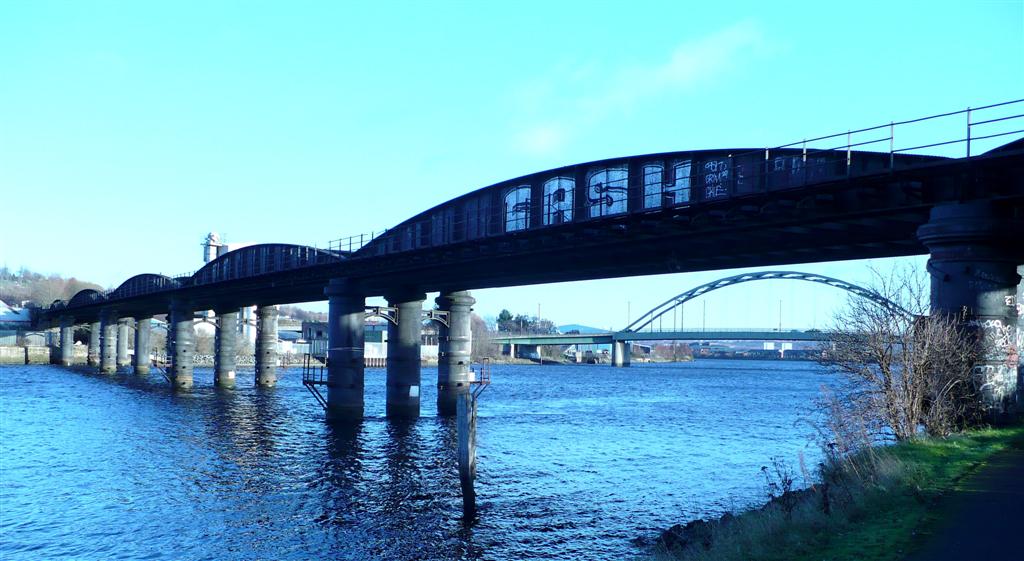
Thanks to Keith Page, who took the photo below in the early 1950s. It shows a V1 2-6-2 loco headed east towards Newcastle. The factory in the background is the world famous Armstrong Engineering Works at Scotswood (Vickers Armstrong in later years) and the chimneys are part of the Adamsez ceramic factory, which made toilet fixtures and fittings. Armstrong's engineering shops ran from Scotswood to Newcastle, a distance of four miles. It was said to be the biggest factory complex in the world in its heyday.
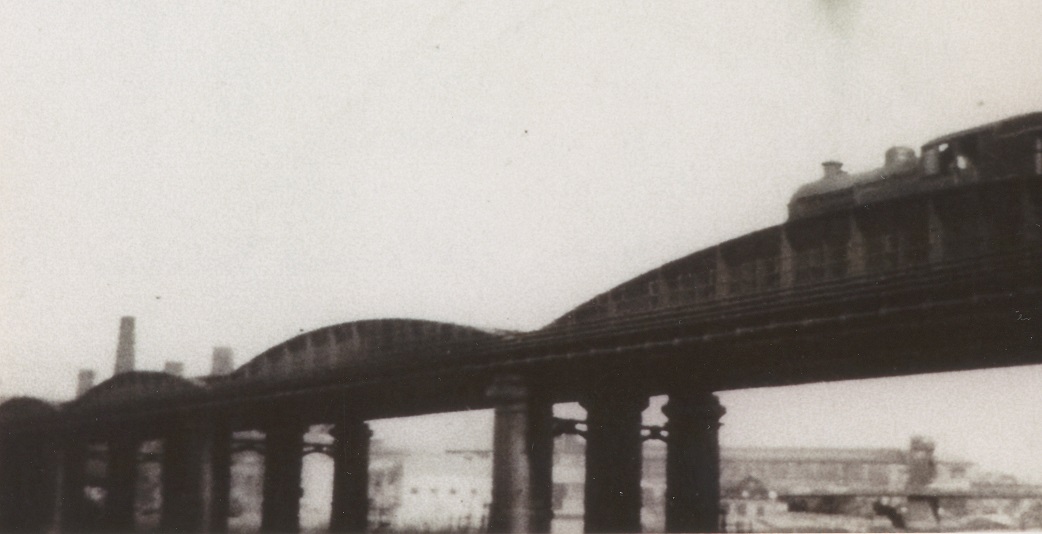
THE NEW SCOTSWOOD BRIDGE
The old chain bridge was seen as potentially unable to cope with traffic volumes as far back as the 1940s and plans were made for replacement by the joint local authorities. So in 1960 the Ministry of Transport authorised replacement and work commenced 1964 finishing in 1967. Attempts to preserve the magnificent old chain bridge failed and it was demolished. The north buttress remains just to the east of its replacement.
Mott, Hay and Anderson designed the new bridge, the work being completed by a consortium of Mitchell Construction and Dorman Long Bridge Builders.
With its two piers and carrying four lanes and footpaths either side, the bridge has a distinctive bow shape and is of box girder construction.
Soon after building, concerns were raised nationally about box girder type construction. The resultant enforced traffic restrictions (single file) caused severe congestion 1971 – 1974, and further maintenance has been needed at intervals since then. Because of this and its fairly uninspiring design this bridge never attained the popularity of its predecessor.
Whilst usage is less than it might have been now, due to the newer A1 bridge (see under) it nevertheless carries very high volumes of traffic leading from Newcastle and the north Tyne conurbation south to Blaydon and the west, the Derwent Valley and to Gateshead’s Metro Centre, a gigantic out of town shopping facility which was at one time Europe’s largest.
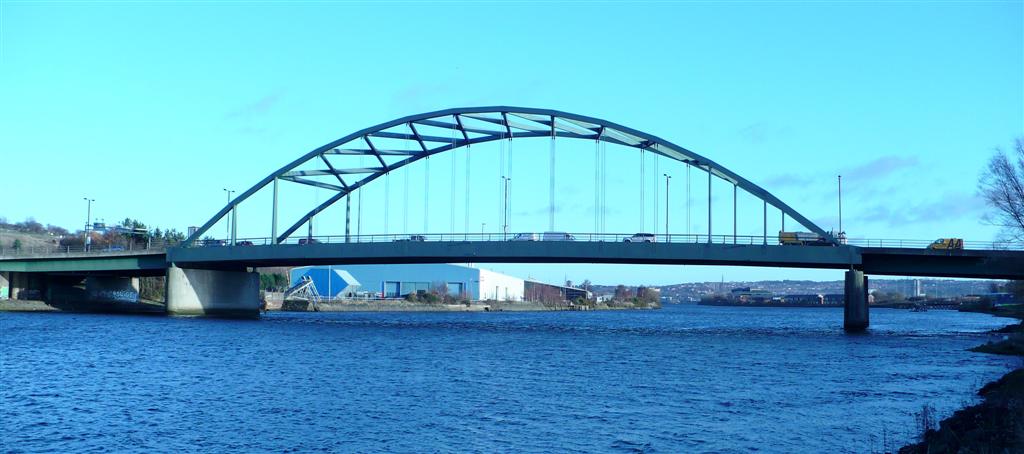
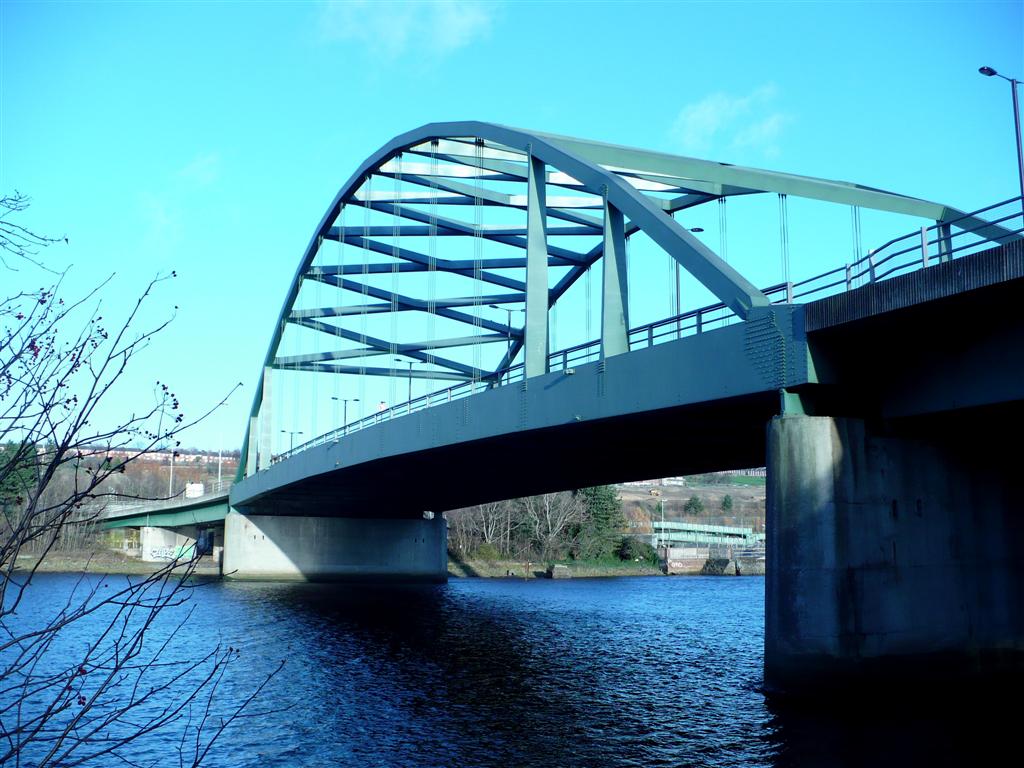
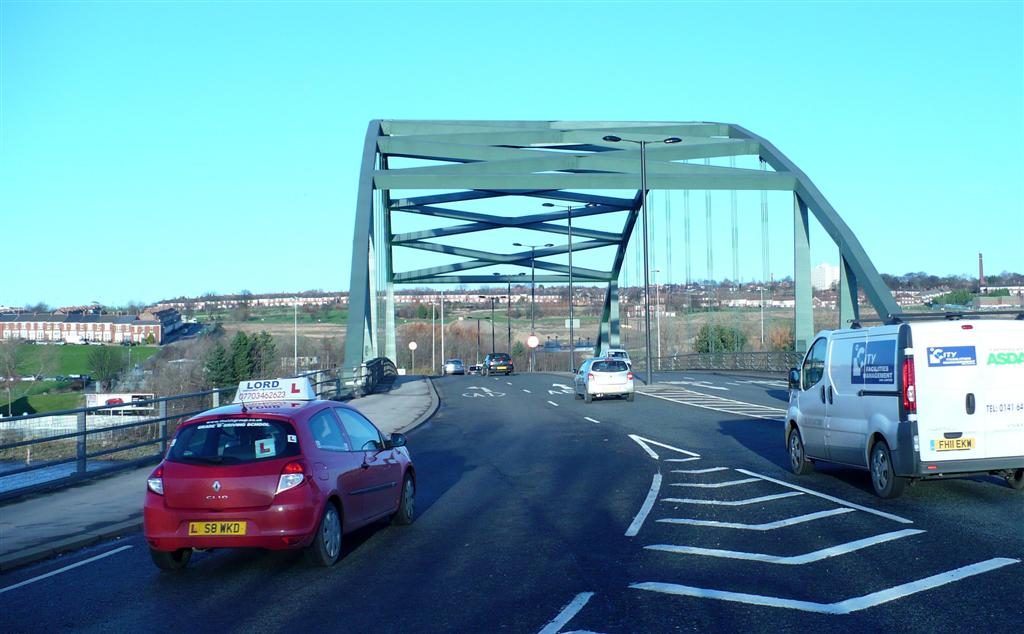
THE BLAYDON (A1) BRIDGE
When the decision was taken to reroute the A1 trunk road west of Newcastle/Gateshead (instead of through the Tyne Tunnel), the route necessitated a new bridge over the Tyne at Blaydon. It was to be situated just west of the existing road and rail bridges.
Designed by Bellen & Ptnrs and built by Edmund Nuttall Ltd it is of concrete construction, with a long seventeen span approach viaduct on the south side, the bridge itself having three cantilevers supported by two concrete pillars. The western by-pass work commenced in 1987, the bridge and northern part opened in 1990, and the southern part and bridge shortly afterwards. Hence the A1M was linked to the A1 north of Newcastle.
The bridge has a quite pleasing, sleek appearance although it is quite minimal in style and feels rather exposed when driving over, as there are no footpaths at the side, so traffic runs close to the protective edge barriers.
Although it takes its name from nearby Blaydon, it does not give direct access to Blaydon Town.
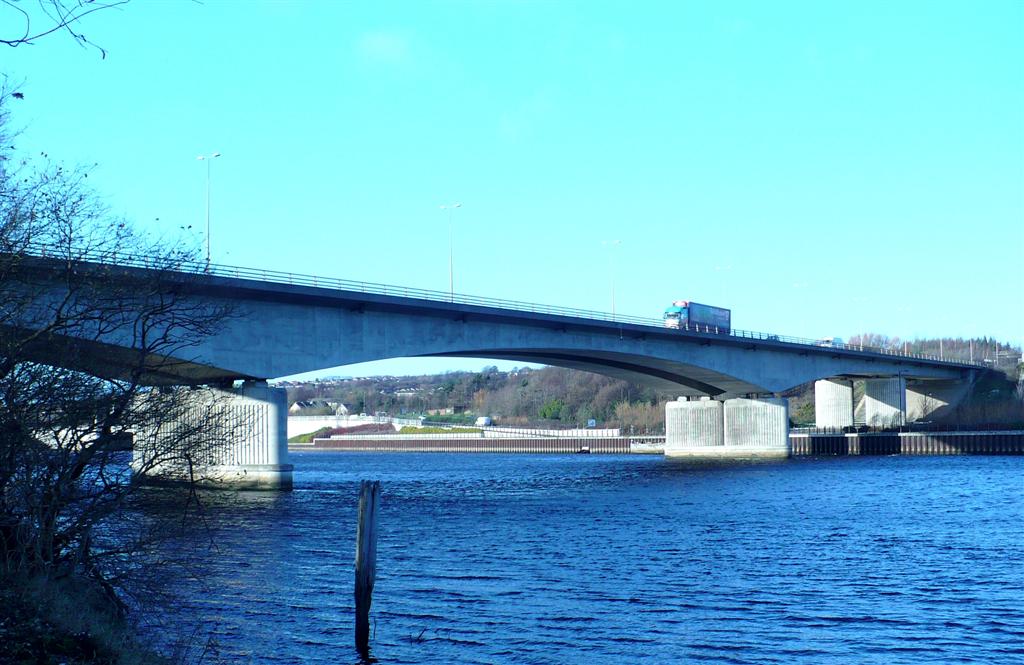
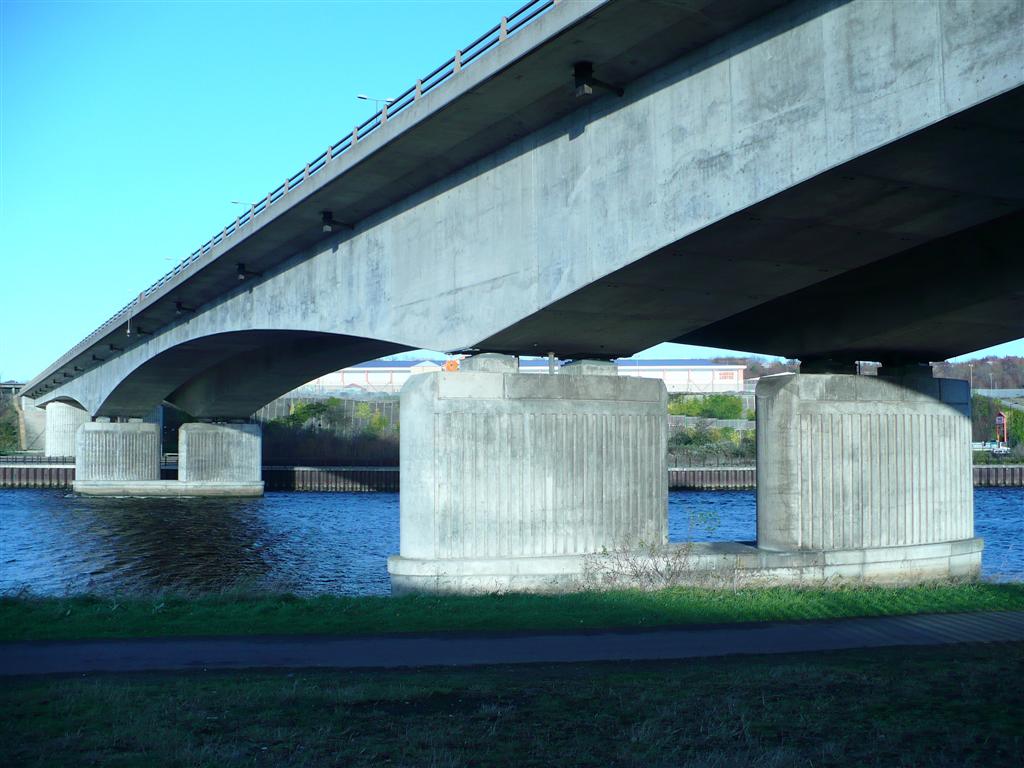
Roly Veitch
7th December 2011
For more information on our local area history, our unique dialect, our wealth of dialect songs and other topics please visit the home page menu - link below.
Back to Home Page